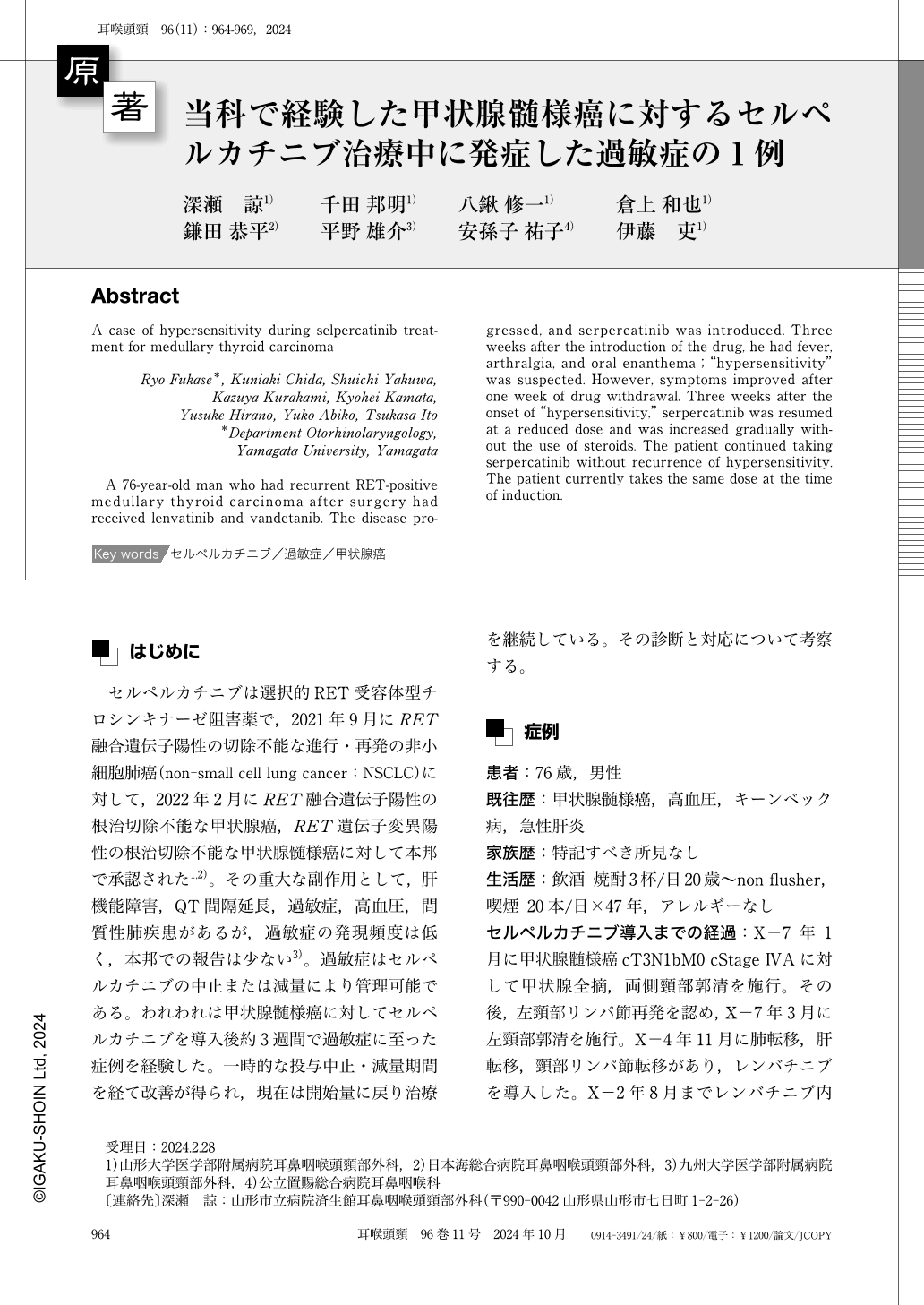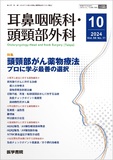Japanese
English
- 有料閲覧
- Abstract 文献概要
- 1ページ目 Look Inside
- 参考文献 Reference
はじめに
セルペルカチニブは選択的RET受容体型チロシンキナーゼ阻害薬で,2021年9月にRET融合遺伝子陽性の切除不能な進行・再発の非小細胞肺癌(non-small cell lung cancer:NSCLC)に対して,2022年2月にRET融合遺伝子陽性の根治切除不能な甲状腺癌,RET遺伝子変異陽性の根治切除不能な甲状腺髄様癌に対して本邦で承認された1,2)。その重大な副作用として,肝機能障害,QT間隔延長,過敏症,高血圧,間質性肺疾患があるが,過敏症の発現頻度は低く,本邦での報告は少ない3)。過敏症はセルペルカチニブの中止または減量により管理可能である。われわれは甲状腺髄様癌に対してセルペルカチニブを導入後約3週間で過敏症に至った症例を経験した。一時的な投与中止・減量期間を経て改善が得られ,現在は開始量に戻り治療を継続している。その診断と対応について考察する。
A 76-year-old man who had recurrent RET-positive medullary thyroid carcinoma after surgery had received lenvatinib and vandetanib. The disease progressed, and serpercatinib was introduced. Three weeks after the introduction of the drug, he had fever, arthralgia, and oral enanthema;“hypersensitivity” was suspected. However, symptoms improved after one week of drug withdrawal. Three weeks after the onset of “hypersensitivity,” serpercatinib was resumed at a reduced dose and was increased gradually without the use of steroids. The patient continued taking serpercatinib without recurrence of hypersensitivity. The patient currently takes the same dose at the time of induction.

Copyright © 2024, Igaku-Shoin Ltd. All rights reserved.


